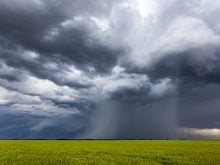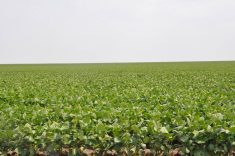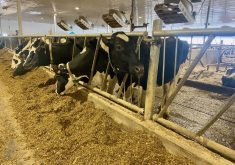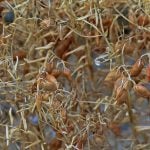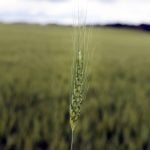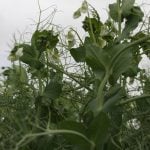The source of Lake Winnipeg’s water quality problems is likely more complex and natural than most popular theories lead people to believe.
The finger of blame for phosphorus pollution is often pointed at the practices of hog producers, cattle feedlots and grain farmers who spread fertilizer on their fields.
But the truth may be far more complicated, said Bill Turner, project field manager for the Deerwood Soil and Water Management Association, based in Miami in south-central Manitoba.
Studies of water samples taken from the South Tobacco Creek Model Watershed project upstream from Miami show that phosphorus, which is blamed for turning the province’s largest lake green, may come from many sources and not just manure and chemical fertilizer.
Read Also
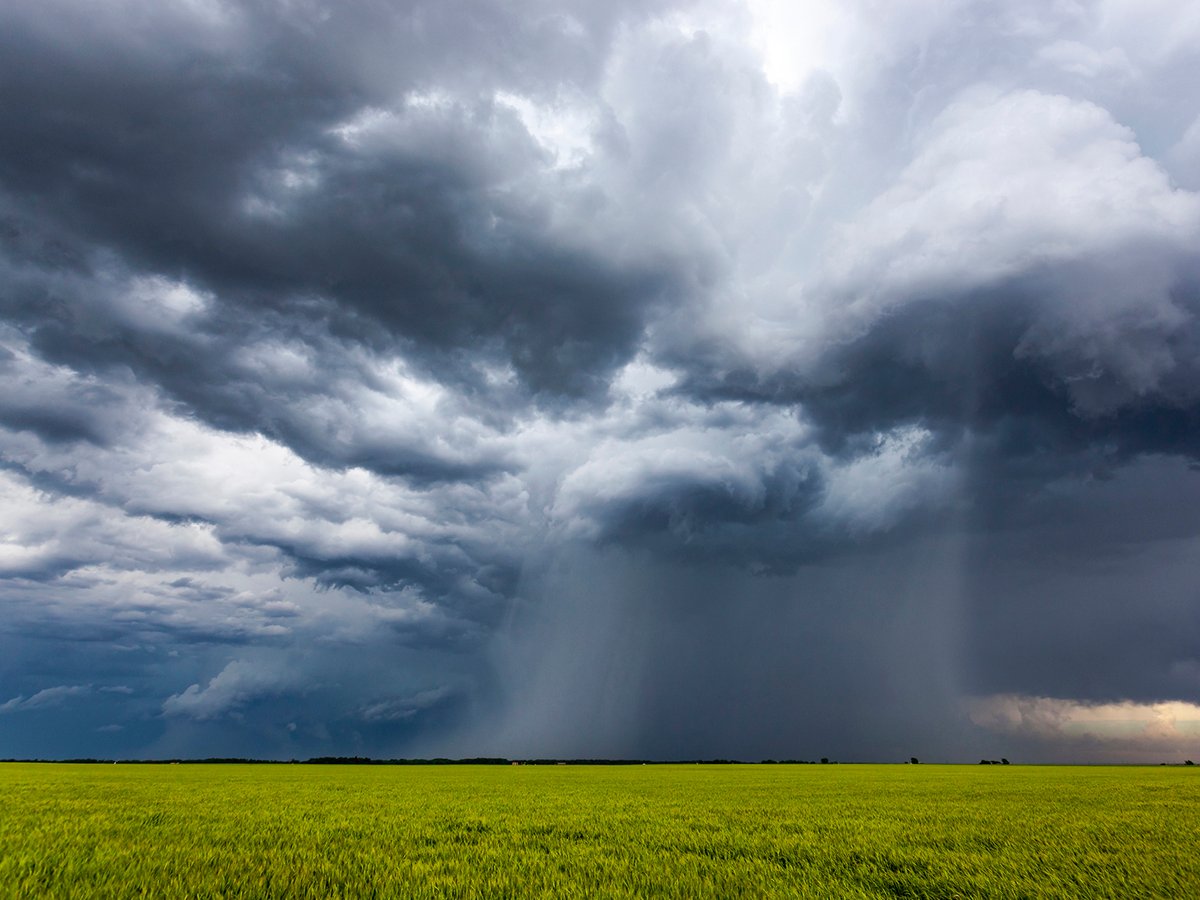
Extreme rain increases as planet warms
In this issue, we are going to wrap up our look at extreme rainfall by examining the different weather patterns that tend to be associated with these rainfall events.
Turner has watched the water quality testing results come in for more than a decade, following up on study after study, guiding a steady flow of researchers along the winding trails among the steep hills that direct the creek’s flow off the ragged edge of the Manitoba escarpment and down to the rivers that flow into Lake Winnipeg.
At a recent meeting that discussed the results of samples taken from the watershed, it became apparent that something other than pigs, cattle and fertilizer was boosting the level of phosphorus in the water.
“Twenty percent of the samples coming out of a naturally wooded area were over the recommended phosphorus guideline,” Turner said. “Everybody shook their head. This is an agricultural watershed. How the hell do you work with that? If you chased everybody out and put it back to trees, 20 percent of the flow would still be over the limit.”
One theory proposed by a University of Manitoba researcher is that freezing and thawing in the extreme prairie climate breaks down the cell walls of vegetative residues and releases nutrients, particularly dissolved phosphorus.
Don Flaten, an associate soil science professor at the U of M, said laboratory work could be finished within a year, but further field study will be needed to confirm a link.
The work is preliminary, but Flaten said tests seem to indicate that the freeze-thaw effect is significant.
“Just in case people haven’t realized it, the Prairies are relatively flat and dry. We don’t have as many problems with the erosion of soil particles causing our phosphorus problem; we have more problems with dissolved phosphorus.”
The study could support the hog industry’s claim that Manitoba’s moratorium on hog barn expansion is largely a political decision that ignores historical reality, Turner said.
He cited reports in Hudson Bay Co. archives where fur trappers hundreds of years ago said they couldn’t navigate northern Manitoba watersheds in their canoes because they had filled with explosive aquatic growth, including algae, duckweed and other aquatic plants.
“In order to support aquatic plants to the point you can’t get your canoe through, there had to be high nutrients,” Turner said. “So high nutrients were there back during the fur trade. There are all kinds of stories like that out there.”
Les McEwan is president of the Deerwood association, which built 26 small dams in the mid-1980s on a watershed that has now become the focus of many studies.
He said the dams create nutrient sinks that protect water quality downstream. They mimic beaver dams, which slow peak water flow on Tobacco Creek and store nutrients until a heavy rain blasts away the dams and flushes nutrients downstream.
“Then the beaver rebuilds the dam, and the cycle starts over,” he said. “We’re finding with the small dams that they act as a nutrient sink – up to a point. At peak flows, they’ll tend to flush through.”
However, some dams impede the storage-flush cycle.
“If you think of Lake Winnipeg as the largest wetland in the province, once they started putting hydroelectric dams at the other end, they’ve stopped the flush-through cycle like in the 1997 flood,” McEwan said.
“Part of what we are seeing could be the result of Lake Winnipeg being unable to flush its phosphorus through into Hudson’s Bay.”


